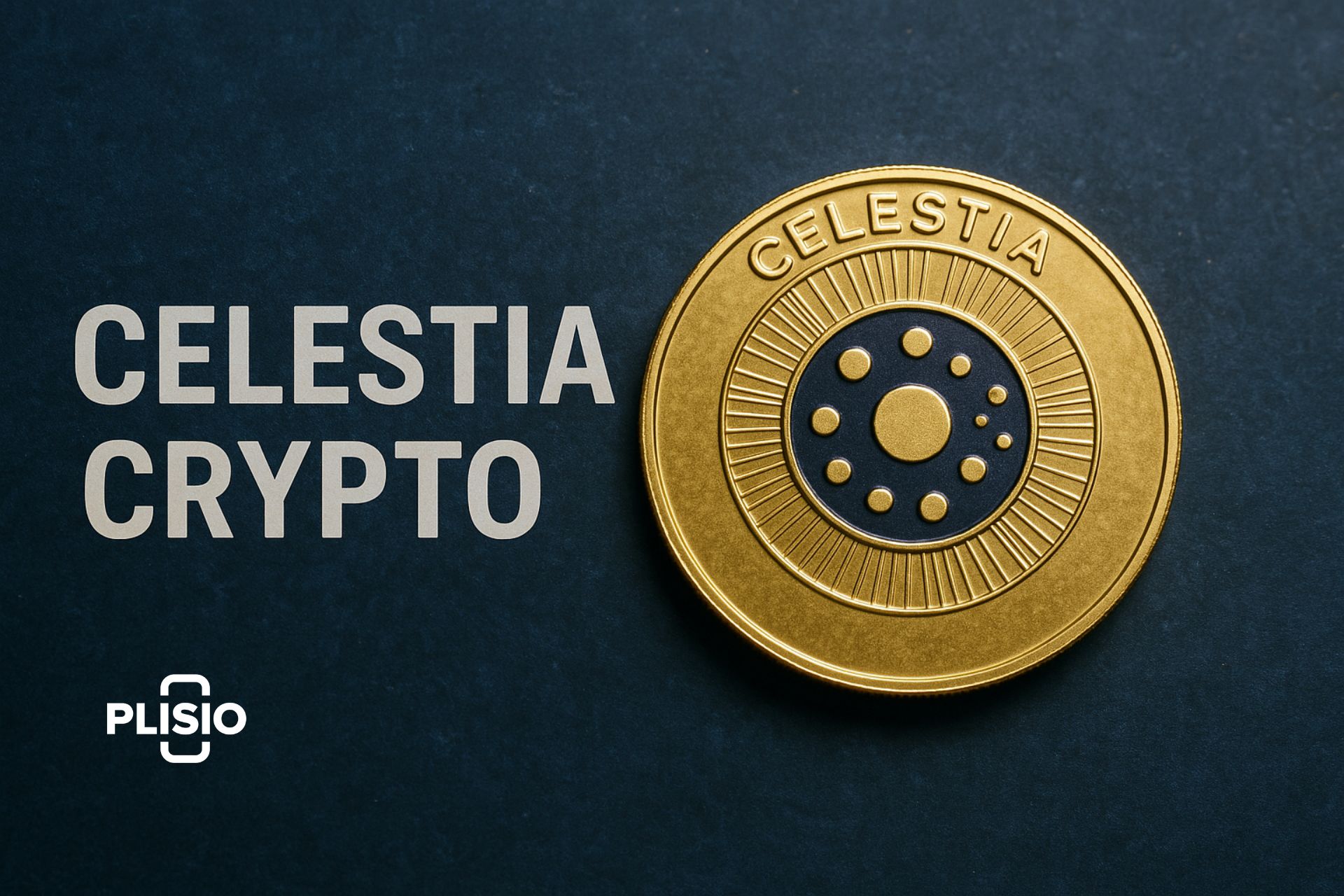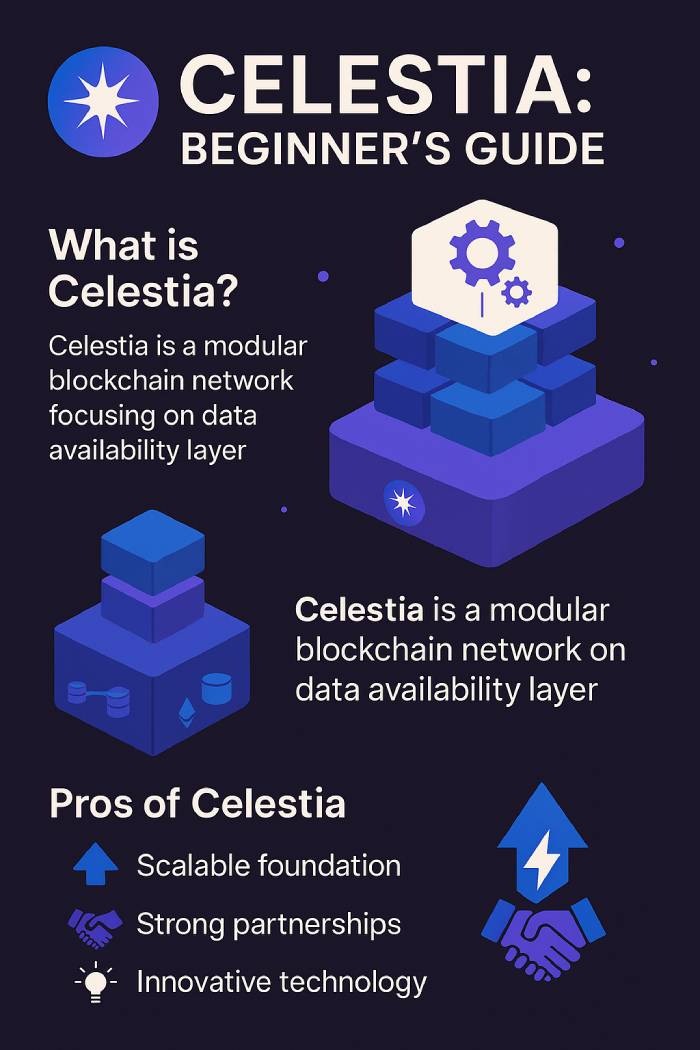Celestia Crypto: A 2025 Guide to the Future of Modular Blockchain

In 2025, Celestia continues to make waves across the cryptocurrency and blockchain ecosystems. As a pioneering modular blockchain network, Celestia redefines how decentralized applications and rollups access scalable infrastructure. This guide explores the essential components of the Celestia network, its native TIA token, and the growing role of modular blockchains in reshaping Web3.
Understanding the Blockchain Trilemma
The blockchain trilemma—introduced by Ethereum co-founder Vitalik Buterin—describes the inherent conflict between decentralization, scalability, and security. In 2025, these challenges still persist for many traditional blockchains like Bitcoin and Ethereum, which operate as monolithic networks that combine execution, consensus, and data availability.
As on-chain activity intensifies and demand for efficient solutions increases, monolithic blockchains face growing limitations. The need for each full node to store all transaction data places immense strain on scalability and decentralization.
This is precisely the gap that modular blockchains like Celestia aim to fill. By decoupling core blockchain layers, Celestia enables developers to build scalable, interoperable crypto infrastructure without compromising security.
What Is Celestia Crypto?
Celestia is the world’s first modular blockchain dedicated to consensus and data availability. It does not process transactions or execute smart contracts. Instead, it serves as a decentralized data availability layer for rollups, Layer 2 chains, and execution layers.
By outsourcing transaction execution to rollups while handling data availability and consensus, the Celestia network creates a lightweight, highly scalable foundation for next-gen crypto applications. Its proof-of-stake (PoS) consensus mechanism allows validators to secure the blockchain efficiently, while light nodes can verify data with minimal hardware requirements.
Rollups and other blockchain projects publish transaction data to Celestia’s "blobspace," making it available to all participants. Thanks to data availability sampling (DAS), this process remains efficient and decentralized—even as demand increases.
According to data from Messari, by Q2 2025, over 180 rollups and Layer 2 chains have integrated Celestia as their primary data availability solution.

Why Developers Choose Celestia
- Build Anything: Developers can deploy custom blockchains as easily as writing a smart contract.
- Use Any VM: Celestia supports nearly any virtual machine, enabling flexible execution environments.
- Dynamic Scalability: Throughput scales with the number of participating nodes and users.
What Is Data Availability and Why Is It Crucial?
Data availability is a cornerstone of blockchain security. It ensures that all transaction data published on-chain can be accessed and verified. Without reliable data availability, users and validators cannot confirm the legitimacy of transactions.
In traditional blockchains, full nodes maintain complete transaction records. But as block sizes increase, fewer users can operate full nodes, weakening decentralization and security.
Celestia uses data availability sampling to solve this issue. Light nodes verify data integrity by randomly sampling erasure-coded block data. This approach offers a scalable and secure alternative to monolithic designs.
How Does Celestia Work?
Celestia’s architecture is rooted in two key technologies:
- Erasure Coding: Each data block is encoded with redundancy, allowing recovery even if part of the data is lost.
- Data Availability Sampling (DAS): Light nodes request random block samples to confirm the presence and completeness of transaction data.
These innovations allow the Celestia network to remain scalable and decentralized, while enabling robust blockchain verification with minimal hardware requirements.
Expert Insight: Dr. Laura Chen, a blockchain researcher at the University of Zurich, explains, “Celestia’s use of DAS is a game-changer—it offloads data verification from full nodes without sacrificing transparency or decentralization. It’s a model that other modular networks will likely adopt.”
Understanding Modular Blockchains
Modular blockchains divide responsibilities across different layers of the stack—unlike monolithic chains that handle everything on one chain. Celestia manages consensus and data availability, while rollups handle the execution layer.
This separation of duties unlocks massive scalability and flexibility. Developers can build fast, reliable, and cost-efficient applications without the bottlenecks common in older blockchain architectures.
Use Cases for Celestia and the TIA Token
The TIA token powers the Celestia ecosystem. As of 2025, the TIA token is ranked among the top 40 cryptocurrencies by market cap and is used in the following ways:
- Data Availability Payments: Developers pay TIA to store transaction data on Celestia’s blobspace.
- Gas Token: Rollups use TIA as their native coin for processing transactions.
- Staking (PoS): Token holders stake TIA to secure the network and participate in the consensus mechanism.
- Governance: Stakers vote on key network parameters and community fund usage.
Crypto analyst James Okafor from Chainmetrics notes, “TIA’s utility across consensus, governance, and gas makes it a versatile crypto asset in the growing modular ecosystem. Its performance post-mainnet proves strong developer confidence.”
Where to Store TIA Tokens
Several wallets support the TIA token and allow users to interact securely with the Celestia network:
- Keplr: A multi-chain wallet for Cosmos-based blockchains.
- Leap Wallet: A feature-rich crypto wallet designed for the Cosmos ecosystem.
- Cosmostation: A popular mobile wallet with native TIA support.
- Ledger: A hardware wallet providing cold storage and enhanced security.
- Celestia Node Wallet: The official wallet for developers and advanced users.
Buy TIA Coin
To buy the TIA coin, users can follow these steps:
- Select an Exchange: Binance, Kraken, Coinbase, KuCoin, OKX, and MEXC list TIA.
- Register and Verify: Create an account and complete KYC verification.
- Fund Your Account: Add fiat or crypto using bank transfer or card.
- Buy TIA: Place a market or limit order on the exchange.
- Secure Your Tokens: Transfer your TIA tokens to a private wallet like Ledger or Keplr.
The Rise of Celestia: 2023–2025
Celestia was conceptualized by Mustafa Al-Bassam, whose 2019 LazyLedger whitepaper laid the groundwork for its modular design. Alongside co-founders Ismail Khoffi (Cosmos) and John Adler (Ethereum rollups), the team launched Celestia’s mainnet in October 2023.
In just under two years, Celestia has gained backing from Coinbase Ventures, Bain Capital Crypto, and Jump Crypto. Its partnerships with Optimism, Polygon, and Arbitrum Orbit have further cemented its role in the future of scalable blockchain infrastructure.
As of 2025, TIA has a circulating supply of 210 million tokens and a market cap exceeding $4.2 billion.
Pros and Cons of Celestia
Advantages of Celestia
- Developer-Friendly: Quick rollup deployment without launching a validator set.
- Cross-Chain Interoperability: Compatible with Ethereum, Cosmos, and any rollup architecture.
- Scalable Infrastructure: Supports thousands of rollups via light nodes and DAS.
Challenges and Risks
- Early Technology: Despite rapid growth, Celestia is still undergoing performance optimization.
- Competition: Monolithic blockchains like Solana and new modular entrants present a competitive landscape.
Looking Ahead: The Future of Celestia
By the end of 2025, Celestia aims to increase block size to 1GB and reach 1 billion light nodes, including smartphone-compatible clients. With the growth of RaaS providers like AltLayer and Caldera, Celestia is already becoming a default data availability layer across ecosystems.
Blockchain investor Ava Martinez comments, “Celestia’s roadmap is ambitious but realistic. Its modular design positions it well for mass adoption in both enterprise and DeFi environments.”
Conclusion
Celestia isn’t just another blockchain—it’s a foundational infrastructure for a scalable, modular Web3. Its focus on consensus and data availability unlocks true decentralization without compromising performance. As modular blockchains continue to outpace traditional architectures, Celestia stands poised to become a core component of the global crypto infrastructure.
